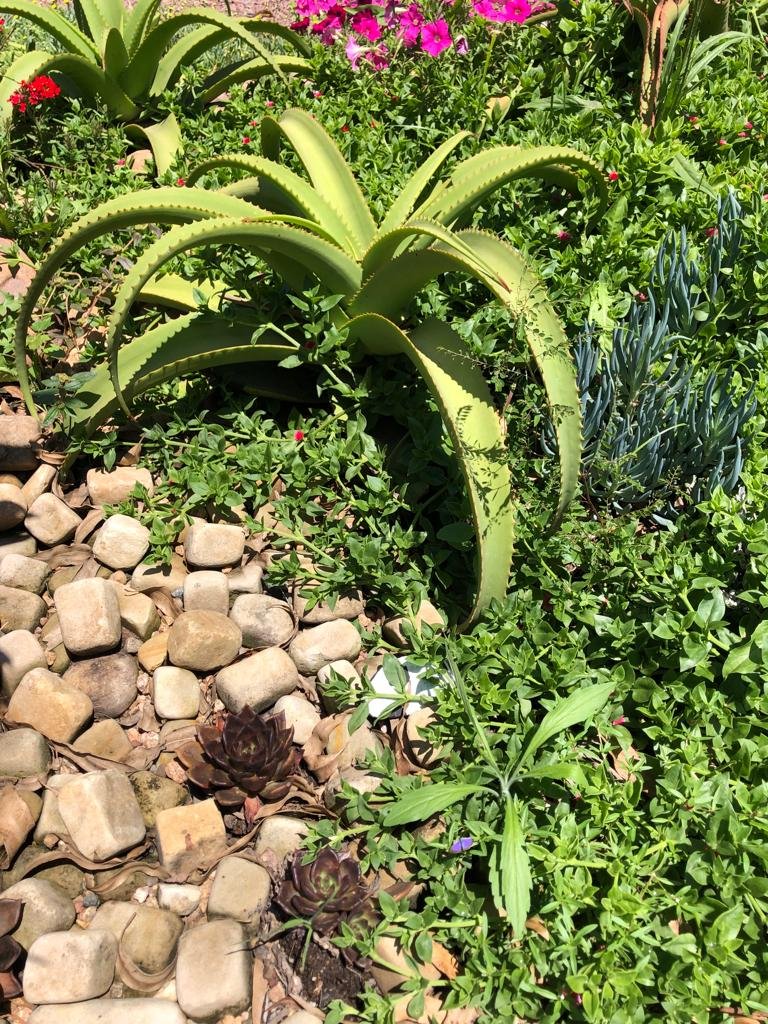Oh the Wind! We love to hate it!
It is however also a vital element of the earth. Wind carries heat, moisture, and pollen to new areas. Without it, very little would be pollinated. As a gardener thought, and a resident of the coastline , what can be more devastating than waking up to find your newly planted garden burnt to little sticks over night by a damaging wind?
Salt laden wind that blows off the sea is very damaging to your plants. Planting up a sea facing garden without sound advice from a knowledgeable and experienced planter, is like pouring cash into a hole. If you’re not planting the right plants in a salt laden wind area it could break the plants, burn their foliage and also stunt their growth.
Here are a couple of ways to work well with a salt-laden wind in your garden:
1. Create SCREENING AND BARRIERS for wind protection
Screening in gardens provides both privacy as well as protection
Screening can either be permanent such as fencing, palisade walls or a trellis, or temporary such a shade netting or a mobile trellis. Shade netting also works really well to protect young plants against a battering wind. Screening allows more delicate plants to maintain a healthy growth and protects from salt damage.
Natural barriers to the wind can also be planted using the correct trees and shrubs, an option which is aesthetically pleasing and cost-effective. One should make use of hedging shrubs, or trees that are flexible and can bend with the wind, to create the most effective natural barrier.
Be sure about the direction of the prevailing winds before you construct anything permanent.
You can read more about creating the best windbreaks in your coastal garden in this great article by Kay Montgomery of Independent HOME. They have some really good advice about placement of constructed or natural windbreaks in your garden.
2. CHOOSE THE CORRECT PLANTS
There are a few plants which do really well on any coastline. Just take a walk along your favourite seaside promenade and you should fund these in abundance:
· Trailing gazania (Gazania rigens): Very useful groundcovers, both wind and salt tolerant
· Natal wild banana or Crane flower (Strelitzia nicolai or Strelitzia reginae): Add great structure to a garden due to their height, work well in groups as they protect each other, and the birds just love them.
· Wild camphor bush (Tarchonanthus camphoratus): You’ll recognise this plant by its cottonwool like puffs of seeds which follow the flowers, and it’s great camphor scent. The birds love this plant as the cotton-wool seeds make for great nesting.
· Wild Olive (Olea Europaea): a great, hardy plant, good to look at and brings with it a touch of Mediterranean look and feel. These should be planted fairly close together to act as a wind break.
· White Milkwood (Sideroxylon inerme): Another hardy tree that grows really tall and sturdy with thick foliage, acting as a great wind barrier.
· Dune-crow berry (Searsia crenata) and Blombos (Metalasia muricate) : These are hedging shrubs that also make for great windbreaks
· Pig’s ears (Cotyledon orbiculate) and Vaalbietou bush (Chrysanthemoides icana) : These make for great groundcover to stabalise the soil and prevent the wind from carrying it away.
· Dune aloes (Aloe thraskii) work well on the coast. They are hardy succulents with a good rooting system, tolerant of wind and salty air as well as dry conditions.
A LAST QUICK TIP: Remember that soil at the coast tends to be dune-like and loose. Improve your soil quality by adding in generous amounts of compost, by fertilizing your garden well, and by adding mulch as a cover.
Happy Gardening! If you would prefer a personal garden consultation, feel free to CONTACT US for an appointment.















